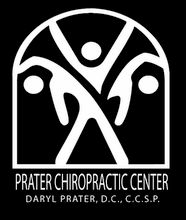
Fire up your engines….this week the high intensity Comets will be blasting through space with a Pace Run with Meteors following suite in a few weeks. Long runs at goal marathon pace are an effective way to prepare you for the demands of the event and offer a great physiological and psychological boost. Most of our long runs, however, are done at endurance/easy pace because running too far and too often at marathon pace is very demanding on the body. The recovery time required would negate the benefits of the workout.
Instead, occasional shorter Pace Runs of 8 – 15 miles are often used to simulate marathon, and have been inserted into the training schedules sporadically. The intention of these is to stress your body in a similar way as a marathon but to limit the duration of the run to minimize recovery time.
For the marathon, pace runs are performed at approximately 20 – 30 seconds slower than lactate threshold pace or .45 – 1:30 faster than endurance/easy runs.
Pace runs provide an excellent opportunity to practice drinking and taking energy gels at race pace. They should be done on a measured course so you can feedback on your pace. If you can exercise restraint and stick to marathon pace, a race of the appropriate distance is an ideal venue for a pace run. The course is marked, there are plenty of aid stations and other runners to help you along. A marked bike trail is also a suitable place for a pace run.
It is also recommended that the course simulate your marathon or half marathon topography. If you are running a flat course such as Glass City or Bayshore, it is beneficial to run some of your pace runs on level terrain. Pancake flat courses, especially in a marathon, are not always necessarily easier as you use the same muscles in the exactly way for the entire duration of the race. By the same token, if you are running a hilly marathon such as Boston, you want to perform some of your pace runs on hilly terrain.
Reference: Pfitzinger, P., and S. Douglas. 2001. Advanced Marathoning. Champaign, IL: Human Kinetics.
Instead, occasional shorter Pace Runs of 8 – 15 miles are often used to simulate marathon, and have been inserted into the training schedules sporadically. The intention of these is to stress your body in a similar way as a marathon but to limit the duration of the run to minimize recovery time.
For the marathon, pace runs are performed at approximately 20 – 30 seconds slower than lactate threshold pace or .45 – 1:30 faster than endurance/easy runs.
Pace runs provide an excellent opportunity to practice drinking and taking energy gels at race pace. They should be done on a measured course so you can feedback on your pace. If you can exercise restraint and stick to marathon pace, a race of the appropriate distance is an ideal venue for a pace run. The course is marked, there are plenty of aid stations and other runners to help you along. A marked bike trail is also a suitable place for a pace run.
It is also recommended that the course simulate your marathon or half marathon topography. If you are running a flat course such as Glass City or Bayshore, it is beneficial to run some of your pace runs on level terrain. Pancake flat courses, especially in a marathon, are not always necessarily easier as you use the same muscles in the exactly way for the entire duration of the race. By the same token, if you are running a hilly marathon such as Boston, you want to perform some of your pace runs on hilly terrain.
Reference: Pfitzinger, P., and S. Douglas. 2001. Advanced Marathoning. Champaign, IL: Human Kinetics.





